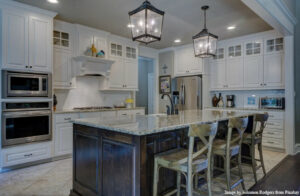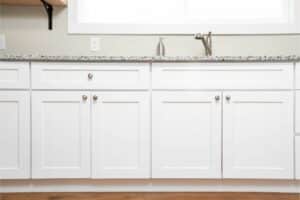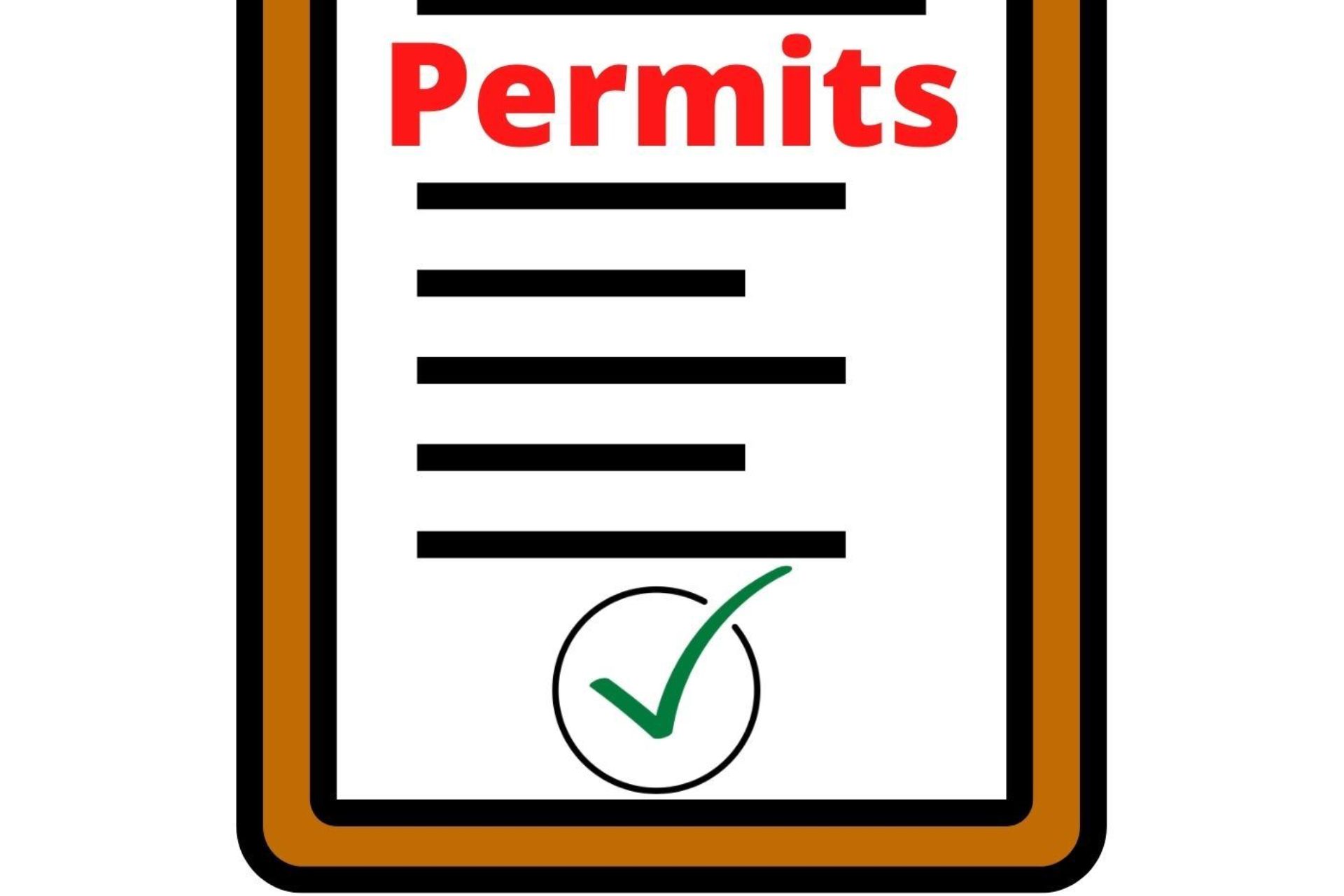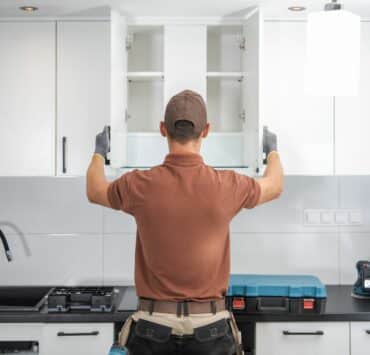Navigating through the complex landscape of home renovations requires a meticulous approach, especially when the heart of the home—the kitchen—is involved. This space, central to daily living and often seen as a home’s anchor, involves multiple layers of functionality and design. It’s vital to understand the bureaucratic layers behind the visual and functional transformation, namely kitchen permit costs.
Why Do You Need a Kitchen Permit?
The realm of construction permits goes beyond mere formalities; it’s a protective layer ensuring safety, quality, and compliance with regional standards.
Safety First
Building Codes as a Safety Net: Derived from a blend of construction expertise and past experiences, building codes are frameworks that ensure every new construction or renovation meets established safety standards. For kitchens, this encompasses safe electrical installations, properly vented gas lines, and efficient plumbing to prevent potential dangers.
Avoiding Long-term Issues: Even if a non-compliant renovation seems fine initially, problems may arise over time. For instance, poor electrical work could degrade wiring insulation, leading to increased fire risks.
Resale Value
Preserving Your Home’s Worth: Beyond the immediate benefits of a renovated kitchen, properly documented and permitted work ensures the home’s overall market value remains uncompromised. Unpermitted work can become a sticking point during sale negotiations, potentially reducing offers or even deterring potential buyers.
Unforeseen Expenses: If an inspector identifies unpermitted work during a property sale, homeowners might be slapped with fines and the daunting task of reversing completed renovations.
Factors Influencing Kitchen Permit Costs
Different elements can tilt the scale of permit costs, from the nature of the renovation to regional bureaucracy.
Project Scope
Varied Renovations, Varied Permits: A mere cosmetic touch-up like adding a backsplash might escape permit necessities. In contrast, structural changes that modify the kitchen’s original blueprint—like extending a kitchen island’s size or integrating a new window—often require extensive paperwork.
Location
Geographic Cost Disparities: Just as a cup of coffee might cost differently in New York than in a small Midwestern town, permit costs vary based on regional administrative costs, population density, and specific urban development plans.
Inspection Requirements
A Deeper Dive: Each aspect of kitchen renovation—from plumbing to electrical installations—might require a distinct inspection. As kitchens are multifunctional spaces, homeowners often find themselves juggling multiple inspections, each adding to the cost.
Breaking Down the Costs
Understanding the intricate breakdown of permit-related charges is pivotal to budget effectively.
Base Permit Fee
Standard Charges: This foundational cost is the entry fee into the renovation world. However, it’s essential to understand that this is just the beginning, and additional charges may arise depending on other factors.
Additional Costs Based on Project Value
Proportional Expenses: Some localities use a sliding scale approach, tying permit costs to the total project’s financial magnitude. A $50,000 kitchen overhaul might have heftier permit fees than a $10,000 cosmetic facelift.
Specialty Permits
For Those Unique Additions: Perhaps you’re considering a skylight or a built-in wine cooler. Special features often need specialized permits, each with distinct requirements and fees.
Penalty for Not Obtaining a Permit
A Costly Oversight: Renovators might be tempted to bypass the bureaucratic red tape. Still, penalties for unpermitted work can be financially draining, often dwarfing the original permit costs. Moreover, the emotional and logistical strain of potentially reversing completed work is a significant deterrent.
How to Save on Kitchen Permit Costs
A smart approach, backed by research and professional consultation, can offer avenues for savings.
Do Your Homework
Being Proactive: Before even selecting tiles or fixtures, dive into your municipality’s permit requirements. This proactive approach can unveil potential cost-saving opportunities and prevent last-minute budget overruns.
Bundle Projects
Efficiency in Numbers: If you’re considering renovating your kitchen today and perhaps your bathroom in six months, it might be cost-effective to pull permits for both projects simultaneously, reducing administrative and inspection fees.
Hire Professionals
The ROI on Expertise: While hiring professionals like architects or contractors involves upfront costs, their knowledge and expertise can offer long-term savings. They can navigate permit processes efficiently, recommend cost-effective solutions, and foresee potential pitfalls, saving time, money, and stress.
Local Versus State Requirements
Different regions can have both state and local mandates when it comes to permits. It’s crucial to discern between the two.
State-Level Mandates
Uniformity Across a Larger Region: State mandates typically set a baseline for safety and construction standards. These guidelines are generalized for broad applicability.
Local Nuances
Tuned to the Community: Cities or counties might have unique requirements due to local environmental factors, historical preservation rules, or specific community concerns. These can often introduce additional layers of complexity and cost.
Understanding Plan Reviews
Before a permit is granted, many municipalities require a plan review.
What is a Plan Review?
Scrubbing the Details: A plan review is a thorough examination of your renovation plans by local authorities. This ensures the proposed changes align with all current building codes and regulations.
Costs and Timeframes
Patience and Budgeting: This review can take several weeks and comes with its own set of fees. Depending on the complexity of your kitchen renovation, you might need to factor in this waiting period and associated costs.
Technology and Kitchen Permits
With the advent of smart homes and integrated technology, the modern kitchen is evolving. This brings about new challenges and costs in the permitting process.
Smart Kitchen Tech
More Than Just Cooking: Today’s kitchens can feature technology like smart refrigerators, voice-controlled lighting, or even integrated home automation systems. These advanced installations might require specialized permits or inspections.
Energy Efficiency and Green Tech
Sustainability Costs: Opting for eco-friendly kitchen solutions, like solar-powered appliances or water-saving fixtures, might have additional permit prerequisites. While they promise long-term savings and environmental benefits, the initial permit process for these technologies can be more involved and pricey.
DIY versus Contractor-Led Projects
Whether you’re a DIY enthusiast or prefer hiring professionals, the permit landscape changes accordingly.
DIY Challenges
Grit and Paperwork: Taking on a kitchen renovation yourself can be rewarding but remember that permit requirements remain consistent. The onus of understanding, applying for, and complying with permits falls squarely on the homeowner.
The Contractor Advantage
Delegating the Bureaucracy: Professional contractors often have experience liaising with local authorities. Hiring them can mean they’ll handle most of the permit-related heavy lifting, ensuring all paperwork is in order and inspections are scheduled appropriately.
Lastly, kitchen renovations are a blend of aesthetic dreams and logistical realities. Kitchen permit costs and processes, while seemingly tedious, are designed to ensure your renovated space is safe, compliant, and poised for longevity. By understanding the intricacies, homeowners can effectively navigate the bureaucratic maze, ensuring their new kitchen stands the test of time and scrutiny.
Related posts:
 2021 Kitchen Trends: Everything That You Must Know
2021 Kitchen Trends: Everything That You Must Know
 Small Space, Big Style: A Guide to Mobile Home Kitchen Remodel
Small Space, Big Style: A Guide to Mobile Home Kitchen Remodel
 How Tall is a Kitchen Island? And Many More Frequently Asked Questions around Islands Answered by Experts
How Tall is a Kitchen Island? And Many More Frequently Asked Questions around Islands Answered by Experts
 The Timeless Beauty of White Oak Kitchen Cabinets
The Timeless Beauty of White Oak Kitchen Cabinets
 Redefining Spaces: DIY Kitchen Renovation Guide
Redefining Spaces: DIY Kitchen Renovation Guide




